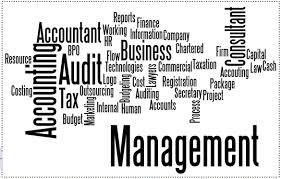How do accounts receivable affect cash flow?
A cash flow will measure the inflow and outflow of the cash in a business. A business uses its money to buy goods to sell, and when it sells goods on credit, it affects the cash flow, and when it sells for cash, it benefits the cash flow.
Account receivable means the money receivable from the customers, so when it increases, the cash you will receive later is an asset the business will receive.
How does the account receivable present in the cash flow statement?
Meaning of Accounts Receivables
It is the owed by its customers who bought goods or services on credit from the business. It refers to the outstanding invoices issued by the company to the customers.
Accounts Receivables and Cash Flows
All businesses should centralize the record of their sales and purchases to determine the company’s cash flow. The account receivable is the cash in, and accounts payable is the cash out in a business.
For example, the business has sold $100,000 in 50% credit and 50% cash, receivable within months from the sale.
The cash received will be entered as a cash inflow in the cash flow statement.
The amount in the credit sales will be entered in the accounts receivable as a debit, and sales will be credited. But when the customer pays the money, it goes to the cash flow statement as a cash inflow.
Accounts Receivables and their recording
The double-entry bookkeeping system states that every debit has a credit. So, debit the accounts receivable account once the goods are sold on credit, while sales as income will be credited. There will be no entries for cash.
When there is an increase in accounts receivable, there will be an increase in net profit.
The starting point of the cash flow statement is Net Profit, which increases due to transactions that do not involve cash.
However, transactions without cash flows do not work for the cash flow statement. Thus, the business deducts any net profit, i.e., sales indirectly, that do not include cash movements.
On the other hand, deduct the increase in accounts receivables from Net Profit to move from the accrual concept of accounting to cash used from operations.
Presentation in Financial Statements:
Income Statement: Record the corresponding amount equivalent to accounts receivables as sales.
Balance Sheet: The amount due from the customer is called accounts receivables. It is popularly called Trade Receivables, and it is a current asset.
Cash Flow Statement:
Then deduct the increase in accounts receivables from Net Profit, and then add the decrease in accounts receivables to Net Profit
Presentation in Cash Flow Statement:
Only the accounts receivable will impact the cash movement when your credit accounts are receivable with a cash or bank account.
Then this movement has to be recorded in a cash flow statement to show the impact on the cash.
Constructing a cash flow statement
Prepare a cash flow statement using a business’s income for a particular period. So, the income side of the cash flow statement shows the sales and the amount of capital introduced if that is a start-up.
Then the expenses include all the outgoings in running and setting up the business. Also, it will show the loan repayments the company is making on the expense side of the cash flow statement. But the cash flow statement will not show the amount in the accounts receivable. Please look at the example for a cash flow statement attached herewith.




